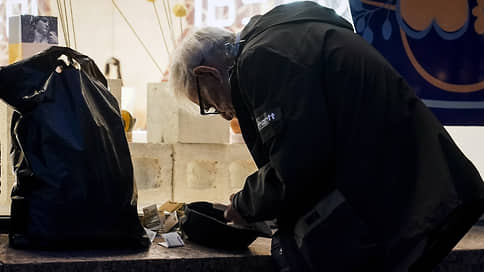At Choux there is no weak spot in the menu
/s3/static.nrc.nl/wp-content/uploads/2025/06/06124545/data133211726-fd2aa7.jpg)
Green asparagus, in a cream of green asparagus, then dried tomatoes, then very thinned strips of raw white asparagus, with elderbloesem over it and a juice of filtered gazpacho with elderbloesem, and on top of a sleek quenelmelk with Mierikwortel. If you are presented with such a dish, you know exactly where you are in the time and space: it is at the end of May, and we are at restaurant Choux.
The asparagus plays the leading role, in all its glory, white and green, crispy and ointment, savory and fresh. Elder blossom gives a drifting perfume, the dried tomato and gazpachos juice give depth, a light-hearted, vegetale umami under tone. That scoop of ice is genius. The Mierik gives Pit, the almond milk a cold but silky, nutty creaminess without being damply and fat, which slowly melts through the whole. It is a complex dish, with many components, but everything has a function, it interacts exactly. It is very smart and composed with a nice touch – the touch of chef Merijn van Berlo.
What do you drink with such an opening move? Georgia is the birthplace of viticulture. A country with thousands of years of wine tradition, with more than 500 indigenous grape varieties. One is the Saperavi.
Usually, rather heavy, ordinary semi -sweet red wines are made of it. But Sommelier Figo from Onna knows a young winemaker who turns it into a light red Petnat: sparkling, with some light red fruit and a little residual sweet that matches the blossom and the candy of that dried tomato, but is still bitter and savory enough to support the asparagus.
Last month, Choux celebrated its 10th anniversary. I think it is appropriate to stand still. For two reasons. One: Van Berlo and Van Onna have been very influential in the Dutch restaurant system in that in recent decade. And two: Choux is still relevant. In fact: it has only gotten better.
Van Berlo started his career as a chef at Theaterfestival de Parade and played two successful pop-up restaurants in Amsterdam (Réperé and Foyer) together with Van Onna, before they permanently landed in the striking red building on the De Ruyterkade near Central Station. « Choux is a fresh asset for the city, » I wrote in September 2015. « Light and sparkling (…) The chef shows (…) throughout the menu’s mastery in vegetable pipes. »
The kitchen of Choux can certainly be called Nordic – strictly following the seasons, ingredients such as immature strawberries and pine cones on syrup, many preserving and fermenting – but Van Berlo has developed a recognizable style of their own, with a clear focus on vegetables and complex, yet light -hearted dishes, often in combination, often in combination.
Animal proteins
In a time in which we started to think more about our over -consumption of animal proteins, Van Berlo inspired a whole new generation of chefs to deal with vegetables in a different way. How you can serve wonderfully interesting, fresh and at the same time umamirijke dishes (and even raw fennel in a dessert through smart use and ferents at the same time).
A great example of this is a small bowl of broth of the peas that we come across (which we will find later) with juice of apple and oil from bean herb. It is megrafris, because it does have the taste of sparkling fresh peas, without the sweetness (because only of the peels). And because of the fermented tomato water. If they hadn’t told it, I would not have tasted that it was in it, but that slightly acidic, umamivolle vegetable juice Makes it work: It connects the freshly sour fruity apple with the best of the Beans.
Van Onna has the same kind of exemplary function for sommeliers, as a champion of natural wines – wines where as little intervention as possible in the making process, often of biodynamic cultivation. The natural wines of its import company Zuiver Wijnen can now be found in restaurants at home and abroad.
Van Berlo continues to think about the future and the impact of his kitchen. Choux is not a fully vegetable kitchen. Meat is sometimes used, but more and more in a serving role – such as poultry as the basis for a sauce. Nowadays he no longer does pieces of baked fish, because it is very difficult for such a large restaurant to buy it really sustainably, says Van Berlo. So he only works with crustaceans and shellfish, because they have less impact on the ecosystem in the ocean.
And he also knows how to prepare it magnificently. Raw Langoustine, on very finely chopped rettich with fitted sour plums from last summer (the season is just around the corner) with a powder of freezed roses is really very tasty. But the full, rich cream, with the nutty, marzipple taste of plum seeds, the dish totally goes to another world (which also applies to the tropical scented, but oh so tight gelber muskelleller vom opok).
There is actually no weak spot in this menu. Of the amuse of an Oostindische-flower filled with smoked ricotta dipped in bee pollen with exactly two coriander seeds; Until the arrow ink vistagliatelle with brown butter with bergamot on a custard of broad bean magazine (as Chawanushi) on a sambal of mussels; to the mega-fleshy morilles on a cracker of Gouda-plot cheese, with mushroom sabayon, mottle, input caralelles and acacia flowers; To a blast of a Vega head dish with the most beautiful plump, thick white asparagus under roasted tanglook leaf, next to homemade tempeh with a lacquered oakaas on it.
On to the next 10 years. And finally that long -awaited Michelin star?

/s3/static.nrc.nl/images/gn4/data133399084-119243.jpg)

/s3/static.nrc.nl/wp-content/uploads/2025/06/06124248/data133134393-7b3a25.jpg)



